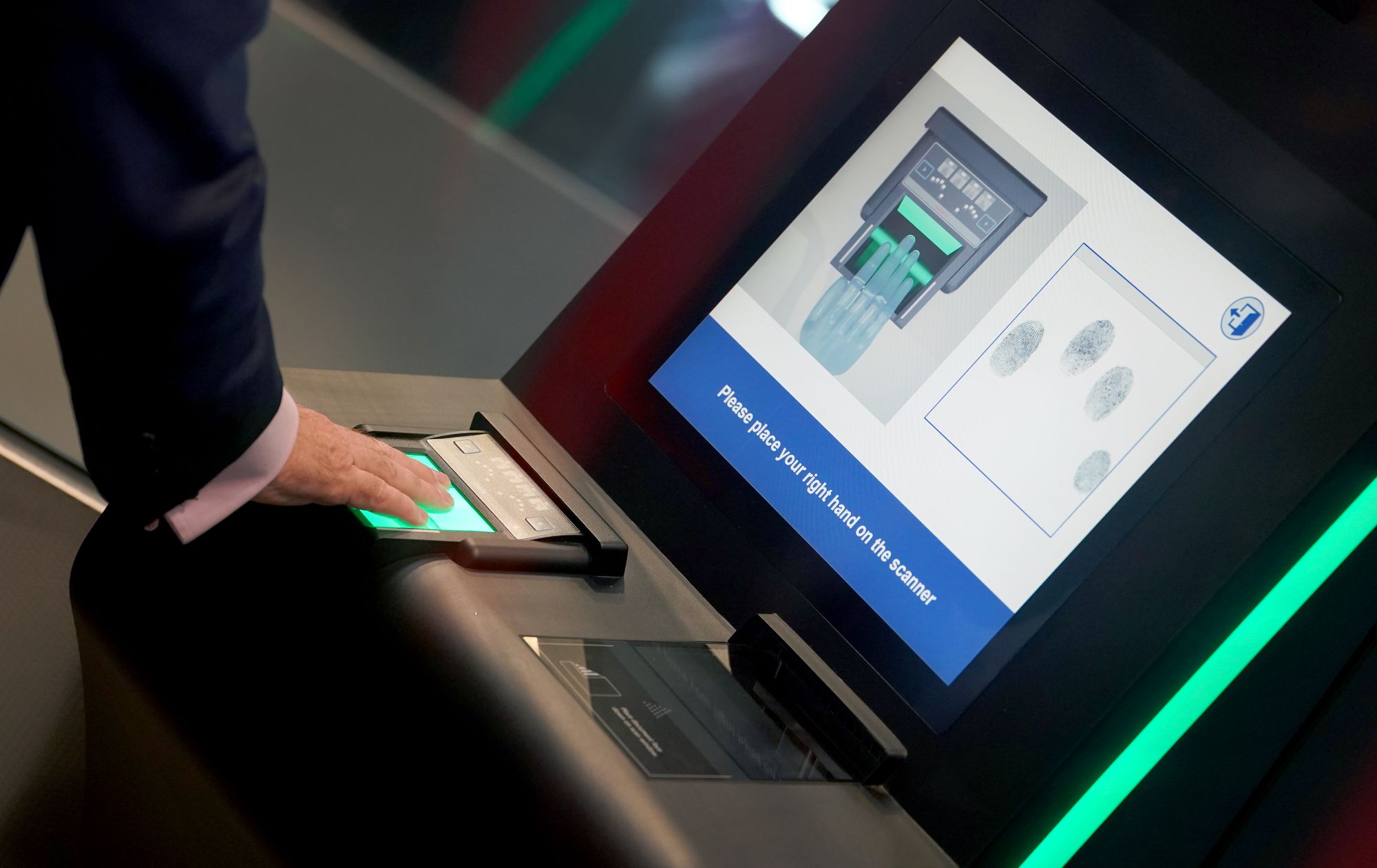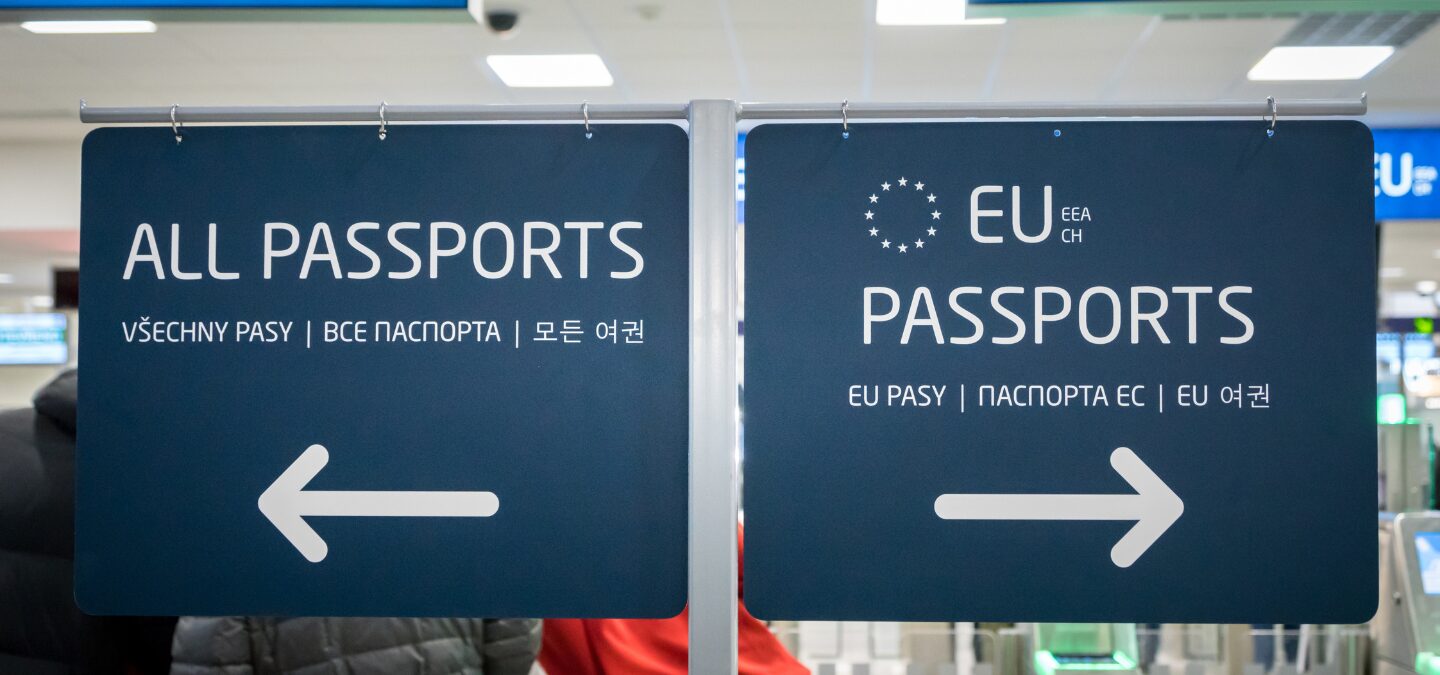What is the European Entry/Exit System (EES)?
The European Entry/Exit System (EES) is a digital border control tool for many travellers from outside the EU / Schengen zone.
Here’s what it does:
-
Records your travel document details, your name, date and place of entry, and later exit, when crossing external Schengen borders for short stays.
-
Collects biometric data (a photo + in many cases fingerprints) on first entry.
-
Stores data securely for future reference.
-
Replaces, over time, manual passport stamping for many non-EU/Schengen travellers.
The goal is better identity verification, reducing overstays, improving border security, and speeding up future crossings.

Why is EES being introduced?
EES exists to tighten controls and modernise borders.
Main reasons:
-
To confirm travellers are who they claim to be, via biometrics.
-
To record precisely how long someone stays, helping enforce rules on maximum stay length (e.g. 90 days in any 180-day period).
-
To reduce fraudulent use of passports or travel documents.
-
To streamline border processing over time — kiosks, eGates, etc., to reduce bottlenecks.
-
To interface with other systems (e.g. for security, migration, law enforcement) to detect travel risks.
Which countries participate in EES
EES applies at external borders of most Schengen Area countries. It also covers non-EU countries in Schengen. Some EU states outside Schengen are not covered.
Key points:
-
All travellers from non-EU, non-Schengen countries (so-called “third-country nationals”) who stay short term are likely subject to EES when they enter external Schengen borders.
-
Some people are exempted (e.g. EU/EEA/Swiss nationals; holders of certain long-stay permits; certain border arrangements).
-
Rules differ slightly by country, so border authorities may have particular practices; travel companies should check specific national guidance.

Timeline & rollout plan
Knowing the timing helps you plan bookings, advise clients, and avoid surprises.
EES rollout timeline:
-
EES becomes operational from 12 October 2025.
-
There will be a phased introduction over about six months, so not all border points will begin fully on day one.
-
Full deployment (i.e. all external border points using EES, with less reliance on manual stamping) is expected by 10 April 2026.
-
During the roll-out, some manual passport stamping may still occur at some borders.
ETIAS (European Travel Information and Authorisation System) timeline:
-
ETIAS is a separate but connected system. It handles pre-travel authorisation for travellers from visa-exempt countries.
-
ETIAS is scheduled to start operations in the last quarter of 2026.
-
The precise start date will be announced months ahead.
-
After the ETIAS launch, there may be transition / grace periods before full enforcement.
What travellers need to do / expect
Before travel
-
Confirm whether you are subject to EES (i.e. non-EU, non-Schengen short stay).
-
No need to pre-register for EES or pay a separate fee for it.
-
On first entry, you will need to have biometrics taken (photo + typically fingerprints), unless exempted.
-
Check your passport validity, onward/return tickets, proof of funds, etc. — as always.
At border / on arrival
-
First crossing triggers full biometric registration.
-
Biometric enrolment may take extra time; allow some buffer at airports / ports especially initially.
-
Once registered, future entries during the validity period may be faster.
-
Overstay detection will be more precise — duration of stay will be tracked accurately.
Age / children considerations
-
Very young children may be exempt from fingerprinting (countries differ).
-
Some biometric requirements may be simplified for minors under a certain age.
-
Always check the specific national rules for each border.
Interaction with other systems (ETIAS, visas, residence permits)
-
EES does not replace visas or travel authorisation systems; it complements them.
-
If a traveller needs ETIAS (because their nationality is visa-exempt), they still must apply for ETIAS once it becomes active.
-
Long-stay visas, residence permits, or special statuses may alter whether full EES checks apply or how simplified the process is.
-
Travel agents should verify whether their client’s nationality, travel purpose, and stay length trigger EES / ETIAS obligations.
Country-Specific Recent Updates
Updated: 08/10/2025
Spain
Spain will implement EES at all its external Schengen borders, including major airports (Madrid Barajas, Barcelona El Prat, Malaga-Costa del Sol) and land crossings with Gibraltar.
Spanish authorities confirmed that data collection kiosks and fingerprint scanners will be added gradually from October 2025. Spain is coordinating closely with the EU’s border agency Frontex and has trained additional border staff to handle early-phase queues.
At the Gibraltar crossing, Spain and the EU have agreed to adapt the process so it meets Schengen rules while avoiding disruption for local residents. Spanish officials said travellers should expect new digital kiosks and separate EES lanes by early 2026.
France and the Channel Crossings (UK → EU)
France will be one of the first countries to process large-scale EES registrations for UK citizens.
At the Port of Dover, Eurotunnel (Folkestone), and Eurostar terminals (London St Pancras, Ebbsfleet, Ashford), the new checks will take place before travellers board their trains or ferries.
Since France operates Schengen exit and entry control on UK soil under the Le Touquet agreement, EES kiosks will be installed in UK departure terminals.
Travellers will provide fingerprints and a facial image during the first trip after EES starts. Once registered, later journeys should be faster, but officials still expect some queues during the first months.
Italy, Germany, Netherlands
These countries plan airport-first deployment. Rome Fiumicino, Frankfurt, Amsterdam Schiphol, and Munich Airports are already testing EES equipment. Border officials are encouraging travellers to have documents ready and to cooperate with biometric capture to avoid delays.
UK citizens and EES
After Brexit, UK nationals became “third-country” visitors, so they are fully included in EES.
From October 2025, every time a UK citizen enters or leaves the Schengen zone, their passport will be scanned and, on first entry, their biometrics recorded.
The system automatically counts time spent in the Schengen area and applies the 90-day-in-180 rule. Overstays will be clearly visible to border authorities.
UK travellers with property or extended stays in EU countries (for example, wintering in Spain or France) will need to monitor their days carefully.
The UK Government’s travel advice recommends allowing extra time at ports, tunnels, and airports during the first months of rollout.
Ireland and non-Schengen travel
Ireland remains outside Schengen, so travellers entering Ireland from the UK or EU will not go through EES. However, once travellers continue onward into Schengen countries, they will be checked there under EES rules.
Expected travel impact
During the first months (October 2025 – April 2026), travellers may experience slightly longer waits at ports and airports, particularly at Dover, Folkestone, and St Pancras where biometric booths are being added.
Operators like Eurotunnel and Eurostar have tested pre-registration lanes to keep flow steady. The UK Department for Transport expects additional processing time of one to two minutes per traveller once staff and passengers become accustomed to the new procedure.

FAQ (Frequently Asked Questions)
Q1: Who exactly must use EES?
Travellers who are nationals of countries outside the EU / Schengen and who visit for short stays (typically up to 90 days within any 180-day period), unless they fall under an exemption (residence permit, long-stay visa, etc.).
Q2: Do travellers need to apply or register for EES before travel?
No. EES requires data collection at the border on first entry. No pre-application or extra fee for EES itself.
Q3: What happens on first entry?
Biometrics (photo + usually fingerprints) are taken; travel document is checked; entry is recorded.
Q4: What if someone refuses to give biometrics?
They may be denied entry or refused processing. Border authorities may require compliance to grant permission to enter.
Q5: Will travellers still get a passport stamp?
Sometimes, during the transition period. Over time, stamps may be phased out in favour of EES digital records.
Q6: How long is the EES record valid?
The record remains stored; many travellers will have their data valid for multiple visits. The exact retention period may vary by national regulation, but generally data is stored for years and reused in checks.
Q7: Do EU / EEA / Swiss nationals need to use EES?
No, not in the same way. Nationals of Schengen / EU / EEA / Switzerland have different border rules.
Q8: At what ages / for what children is EES applicable?
-
Very young children (often under age 12) may be exempt from fingerprint requirements in many cases, though they may still need to be registered by travel document and photo.
-
Older children may need biometric enrolment, depending on national rules.
-
Always check the particular country’s rules for children, as they vary.
Q9: What is ETIAS, and how does it differ from EES?
-
ETIAS is a pre-travel authorisation system for certain travellers (those from visa-exempt countries).
-
EES is about recording entries/exits and biometrics at border control.
-
Both systems together strengthen security and compliance.
Q10: When will ETIAS begin?
ETIAS is expected to begin in the last quarter of 2026. The precise date will be announced in advance.
Q11: Will there be any grace or transition periods once ETIAS launches?
Yes. After the official start, there is likely to be a transitional phase during which applications are accepted but enforcement may be gradual. Then there may be a fuller enforcement period.





One comment
Mandeep Kooner
9 October 2025 at 10:54
An amazing accurate detailed and understandable post thank you go world wide for a brilliant informative post